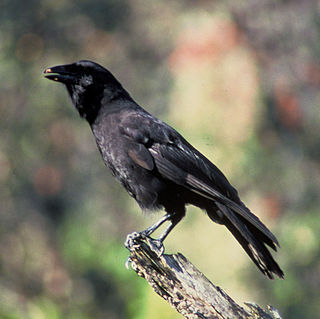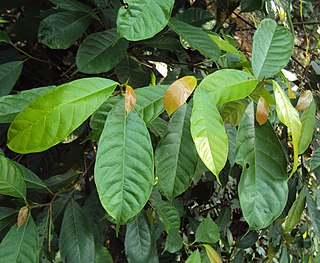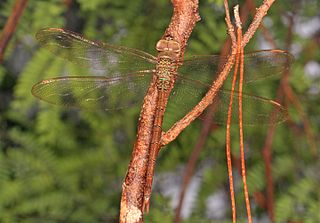An eating disorder is a mental disorder defined by abnormal eating behaviors that adversely affect a person's physical or mental health. These behaviors include eating either too much or too little. Types of eating disorders include binge eating disorder, where the patient keeps eating large amounts in a short period of time typically while not being hungry; anorexia nervosa, where the person has an intense fear of gaining weight and restricts food or overexercises to manage this fear; bulimia nervosa, where individuals eat a large quantity (binging) then try to rid themselves of the food (purging); pica, where the patient eats non-food items; rumination syndrome, where the patient regurgitates undigested or minimally digested food; avoidant/restrictive food intake disorder (ARFID), where people have a reduced or selective food intake due to some psychological reasons; and a group of other specified feeding or eating disorders. Anxiety disorders, depression and substance abuse are common among people with eating disorders. These disorders do not include obesity. People often experience comorbidity between an eating disorder and OCD. It is estimated 20–60% of patients with an ED have a history of OCD.

The International Union for Conservation of Nature (IUCN) Red List of Threatened Species, also known as the IUCN Red List or Red Data Book, founded in 1964, is an inventory of the global conservation status and extinction risk of biological species. A series of Regional Red Lists, which assess the risk of extinction to species within a political management unit, are also produced by countries and organizations.

Bulimia nervosa, also known simply as bulimia, is an eating disorder characterized by binge eating followed by compensatory behaviors, such as vomiting, excessive exercise, or fasting to prevent weight gain.

Argyreia nervosa is a perennial climbing vine native to the Indian subcontinent and introduced to numerous areas worldwide, including Hawaii, Africa, and the Caribbean. Though it can be invasive, it is often prized for its aesthetic and medicinal value. Common names include Hawaiian baby woodrose, adhoguda अधोगुडा or vidhara विधारा (Sanskrit), elephant creeper and woolly morning glory. Its seeds are known for their powerful entheogenic properties, greater or similar to those of Ipomoea species, with users reporting significant psychedelic and spiritual experiences. The two botanical varieties are Argyreia nervosa var. nervosa described here, and Argyreia nervosa var. speciosa, the roots of which are used in Ayurvedic medicine.

Elattostachys is a genus of about 21 species of trees known to science, constituting part of the plant family Sapindaceae.

A species that is extinct in the wild (EW) is one that has been categorized by the International Union for Conservation of Nature as only consisting of living members kept in captivity or as a naturalized population outside its historic range. Classification requires exhaustive surveys conducted within the species' known habitat with consideration given to seasonality, time of day, and life cycle. Once a species is classified as EW, the only way for it to be downgraded is through reintroduction.

Gynacantha is a genus of dragonflies in the family Aeshnidae. The females have two prominent spines under the last abdominal segment. This gives the genus name and the common name two-spined darners; they are also known as duskhawkers.
Hopea nervosa is a species of plant in the family Dipterocarpaceae. It is found in Sumatra, Peninsular Malaysia and Borneo.
Horsfieldia nervosa is a species of plant in the family Myristicaceae. It is a tree endemic to Borneo where it is confined to Sarawak.
Isoglossa nervosa is a species of plant in the family Acanthaceae. It is an herbaceous perennial or subshrub native to southeastern Nigeria, Cameroon, and Bioko island in Equatorial Guinea. Its natural habitat is tropical montane forest from 2,000 to 2,950 meters elevation.

Kudoacanthus is a genus of plants in the family Acanthaceae. It contains a single species, Kudoacanthus albonervosus. It is a subshrub endemic to Taiwan.
Pseuduvaria nervosa is a species of plant in the Annonaceae family. It is a tree endemic to Peninsular Malaysia.

A vulnerable species is a species which has been categorized by the International Union for Conservation of Nature as being threatened with extinction unless the circumstances that are threatening its survival and reproduction improve.

Anorexia nervosa (AN), often referred to simply as anorexia, is an eating disorder characterized by food restriction, body image disturbance, fear of gaining weight, and an overpowering desire to be thin.

Psychotria nervosa, also known as Seminole balsamo or wild coffee, is a shade tolerant medium-sized shrub native to Florida as well as the West Indies and Central and South America. It produces a "small, red, ellipsoid fruit" that resembles "the true coffee bean" in shape and attract birds. Its maximum height ranges from approximately 4–10 feet.

Ficus nervosa is a tree in the family Moraceae which grows up to a height of 35 metres. It is native to southern China, Taiwan and tropical Asia. The tree is grown in coffee plantations for shade.

Megalonaias nervosa, the washboard, is a freshwater mussel species in the family Unionidae.

Gynacantha nervosa, the twilight darner, is a species of darner in the dragonfly family Aeshnidae. It is found in the Caribbean Sea, Central America, North America, and South America.

Endangered species, as classified by the International Union for Conservation of Nature (IUCN), are species which have been categorized as very likely to become extinct in their known native ranges in the near future. On the IUCN Red List, endangered is the second-most severe conservation status for wild populations in the IUCN's schema after critically endangered. In 2012, the IUCN Red List featured 3,079 animal and 2,655 plant species as endangered worldwide. The figures for 1998 were 1,102 and 1,197 respectively.
Serruria nervosa, the fluted spiderhead, is a flowering shrub that belongs to the genus Serruria and forms part of the fynbos. The plant is endemic to the Western Cape and occurs from the Kleinrivierberge to the Elim plain and up to the coast. The shrub is small, upright and grows only 30 cm high and flowers from July to November














